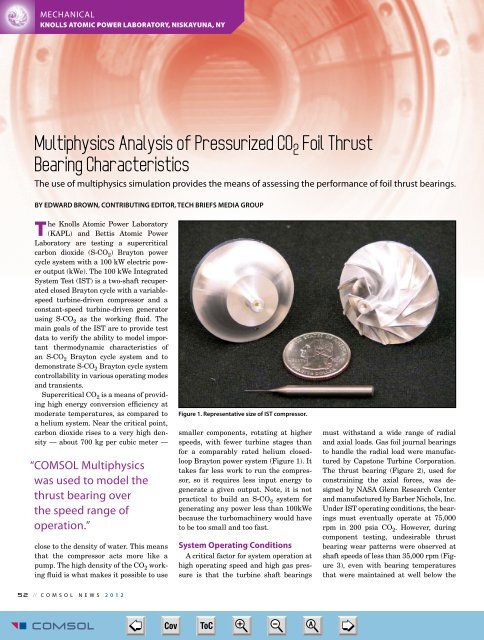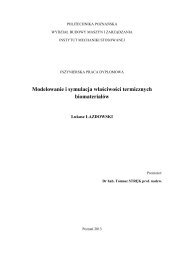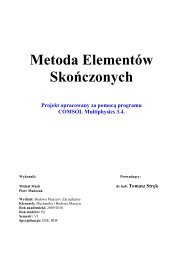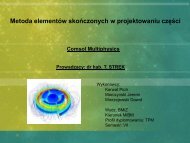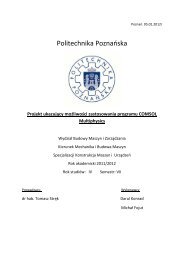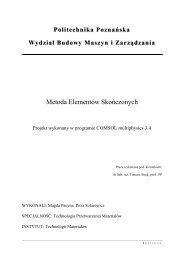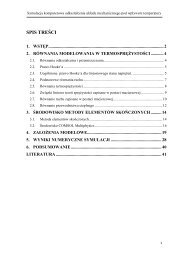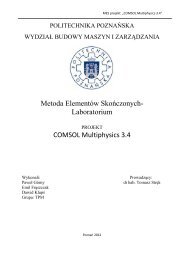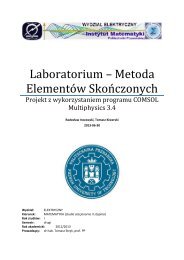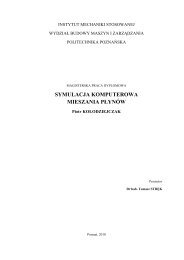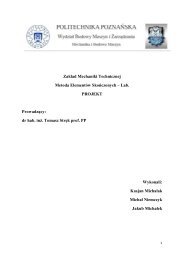COMSOL News
COMSOL News
COMSOL News
Create successful ePaper yourself
Turn your PDF publications into a flip-book with our unique Google optimized e-Paper software.
MECHANICAL<br />
KNOLLS ATOMIC POWER LABORATORY, NISKAYUNA, NY<br />
Multiphysics Analysis of Pressurized CO 2 Foil Thrust<br />
Bearing Characteristics<br />
The use of multiphysics simulation provides the means of assessing the performance of foil thrust bearings.<br />
BY EDWARD BROWN, CONTRIBUTING EDITOR, TECH BRIEFS MEDIA GROUP<br />
The Knolls Atomic Power Laboratory<br />
(KAPL) and Bettis Atomic Power<br />
Laboratory are testing a supercritical<br />
carbon dioxide (S-CO 2 ) Brayton power<br />
cycle system with a 100 kW electric power<br />
output (kWe). The 100 kWe Integrated<br />
System Test (IST) is a two-shaft recuperated<br />
closed Brayton cycle with a variablespeed<br />
turbine-driven compressor and a<br />
constant-speed turbine-driven generator<br />
using S-CO 2 as the working fluid. The<br />
main goals of the IST are to provide test<br />
data to verify the ability to model important<br />
thermodynamic characteristics of<br />
an S-CO 2 Brayton cycle system and to<br />
demonstrate S-CO 2 Brayton cycle system<br />
controllability in various operating modes<br />
and transients.<br />
Supercritical CO 2 is a means of providing<br />
high energy conversion efficiency at<br />
moderate temperatures, as compared to<br />
a helium system. Near the critical point,<br />
carbon dioxide rises to a very high density<br />
— about 700 kg per cubic meter —<br />
“ <strong>COMSOL</strong> Multiphysics<br />
was used to model the<br />
thrust bearing over<br />
the speed range of<br />
operation.”<br />
close to the density of water. This means<br />
that the compressor acts more like a<br />
pump. The high density of the CO 2 working<br />
fluid is what makes it possible to use<br />
Figure 1. Representative size of IST compressor.<br />
smaller components, rotating at higher<br />
speeds, with fewer turbine stages than<br />
for a comparably rated helium closedloop<br />
Brayton power system (Figure 1). It<br />
takes far less work to run the compressor,<br />
so it requires less input energy to<br />
generate a given output. Note, it is not<br />
practical to build an S-CO 2 system for<br />
generating any power less than 100kWe<br />
because the turbomachinery would have<br />
to be too small and too fast.<br />
System Operating Conditions<br />
A critical factor for system operation at<br />
high operating speed and high gas pressure<br />
is that the turbine shaft bearings<br />
must withstand a wide range of radial<br />
and axial loads. Gas foil journal bearings<br />
to handle the radial load were manufactured<br />
by Capstone Turbine Corporation.<br />
The thrust bearing (Figure 2), used for<br />
constraining the axial forces, was designed<br />
by NASA Glenn Research Center<br />
and manufactured by Barber Nichols, Inc.<br />
Under IST operating conditions, the bearings<br />
must eventually operate at 75,000<br />
rpm in 200 psia CO 2 . However, during<br />
component testing, undesirable thrust<br />
bearing wear patterns were observed at<br />
shaft speeds of less than 35,000 rpm (Figure<br />
3), even with bearing temperatures<br />
that were maintained at well below the<br />
5 2 // <strong>COMSOL</strong> NEWS 2 0 1 2<br />
<strong>COMSOL</strong> <strong>News</strong> 2012-17.indd 52<br />
➮<br />
Cov ToC + – A<br />
➭<br />
5/15/12 3:00 PM


